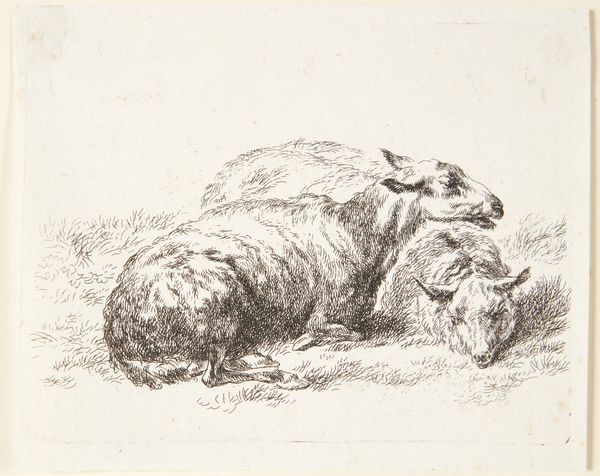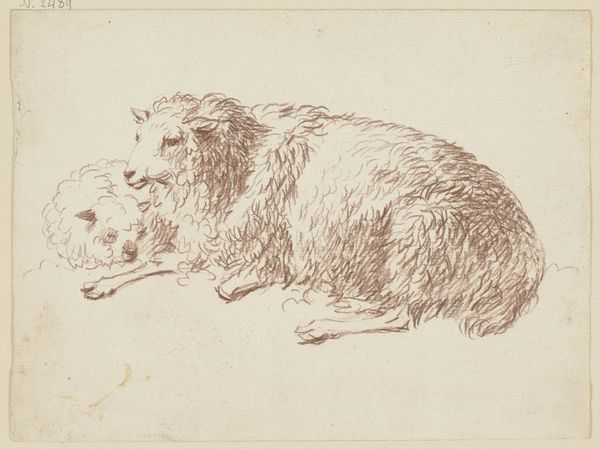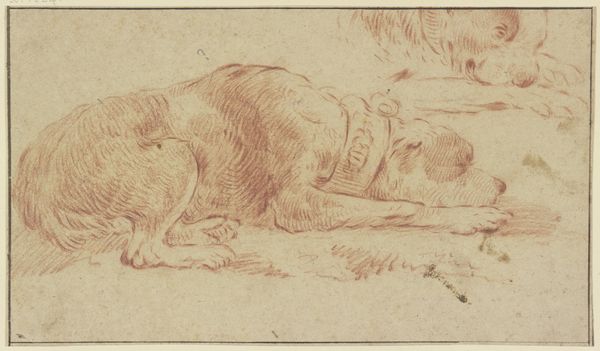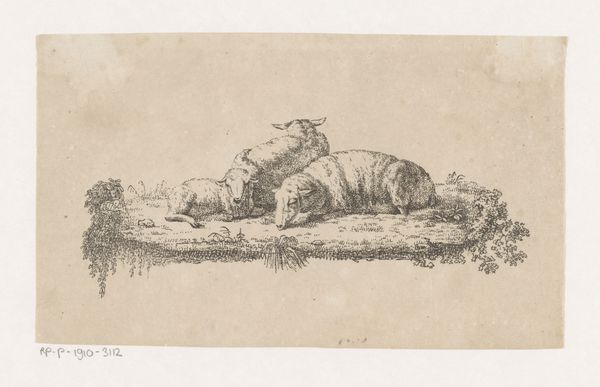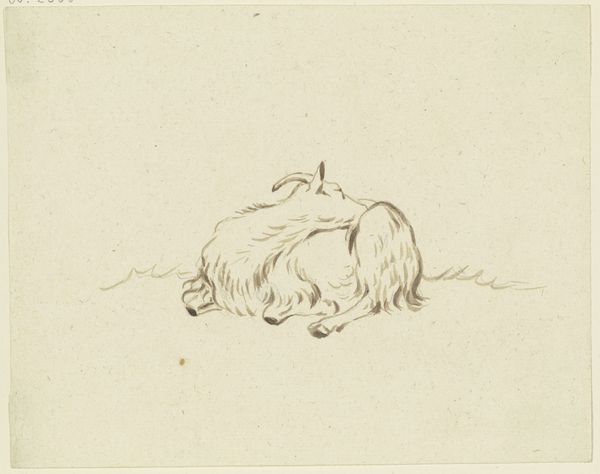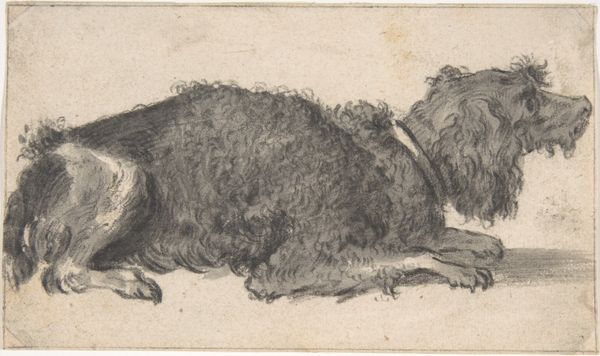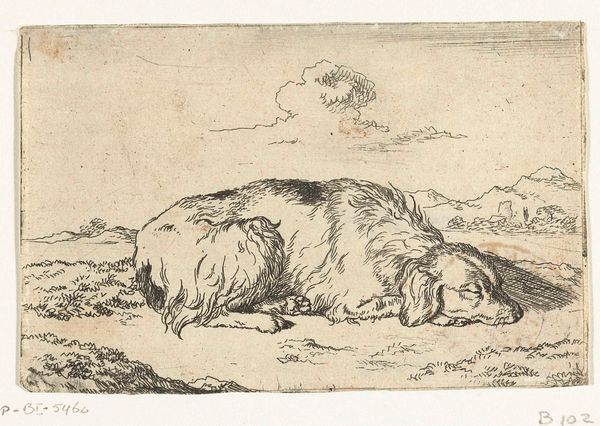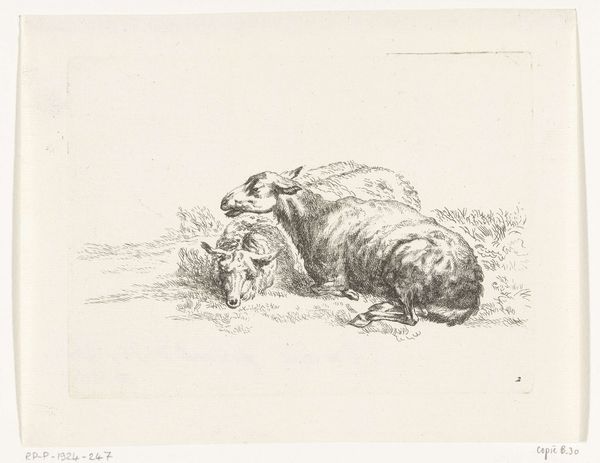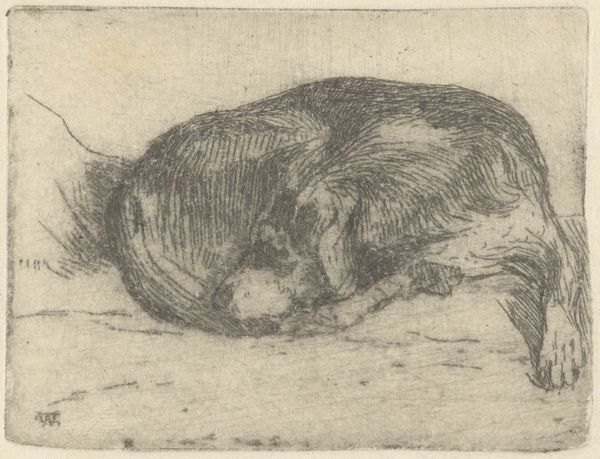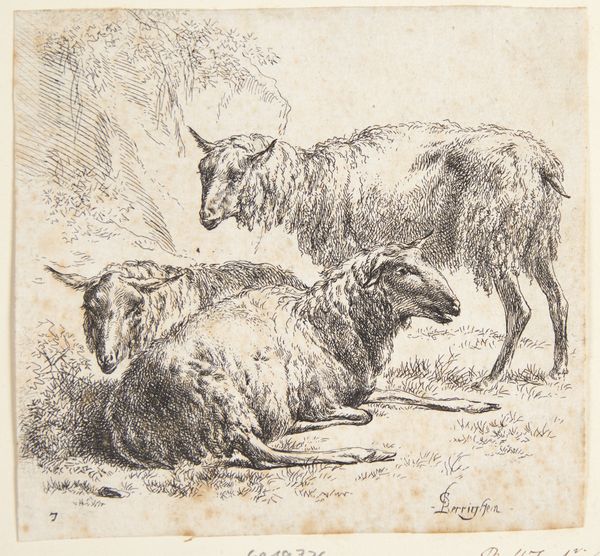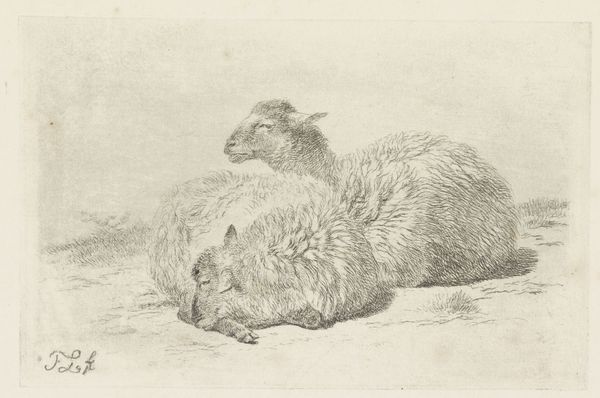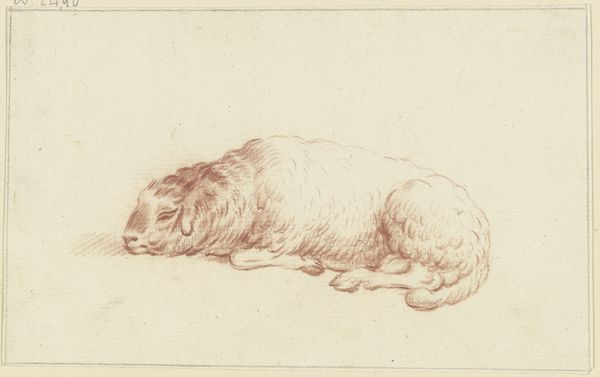
print, etching
#
toned paper
#
light pencil work
# print
#
etching
#
pencil sketch
#
possibly oil pastel
#
pencil drawing
#
coffee painting
#
pen-ink sketch
#
pencil work
#
watercolour illustration
#
watercolor
Dimensions: 100 mm (height) x 130 mm (width) (bladmaal)
Curator: Nicolaes Berchem created this delicate etching, "To liggende får," or "Two Lying Sheep," sometime between 1620 and 1683. The print uses soft, feathery lines on toned paper. What’s your first impression? Editor: I am immediately struck by how serene and bucolic the scene is. There's a tangible sense of stillness; it feels like observing a very private moment of animal repose. Curator: Absolutely. Berchem, working during the Dutch Golden Age, often depicted pastoral scenes, which reflected the increasing wealth and land ownership of the Dutch middle class. But these images weren't simply documentation, right? They participated in a larger construction of national identity. Editor: Precisely. The seemingly simple subject matter carries immense social weight. These weren’t just sheep; they were symbols of prosperity and an idealised rural life that contrasted with the realities of urbanization and trade that were defining the era. Was it for everyone? Of course not. Curator: How do you think the context of Dutch colonial exploits ties into his pastoral scenes, if at all? Berchem's idealized countryside is made possible in part by violence elsewhere... Editor: I believe your observation here to be incredibly potent. While the foreground showcases this apparent serenity, the wealth underwriting this life sprung directly from global trade networks, including the often brutal reality of colonial expansion. Can one appreciate the peace in this moment while simultaneously acknowledging its uncomfortable truths? Curator: It's a vital question. This artwork highlights the contradictions embedded within idyllic representations and asks us to critically examine the social, economic, and environmental consequences embedded within them. Editor: It forces us to confront difficult questions. In viewing art from any period, historical understanding shouldn't exist independently of moral considerations; both must operate in unison. This perspective lets the image itself evolve as historical narratives reveal greater degrees of depth. Curator: Ultimately, grappling with these nuances, especially as audiences, shapes how we contextualize, experience, and draw meaning from the art of the Dutch Golden Age. It certainly moves us beyond a simple appreciation of the art alone. Editor: A perfect union of form and a recognition of relevant truth. It pushes this peaceful sketch beyond surface tranquility, providing more expansive reflection instead.
Comments
No comments
Be the first to comment and join the conversation on the ultimate creative platform.
